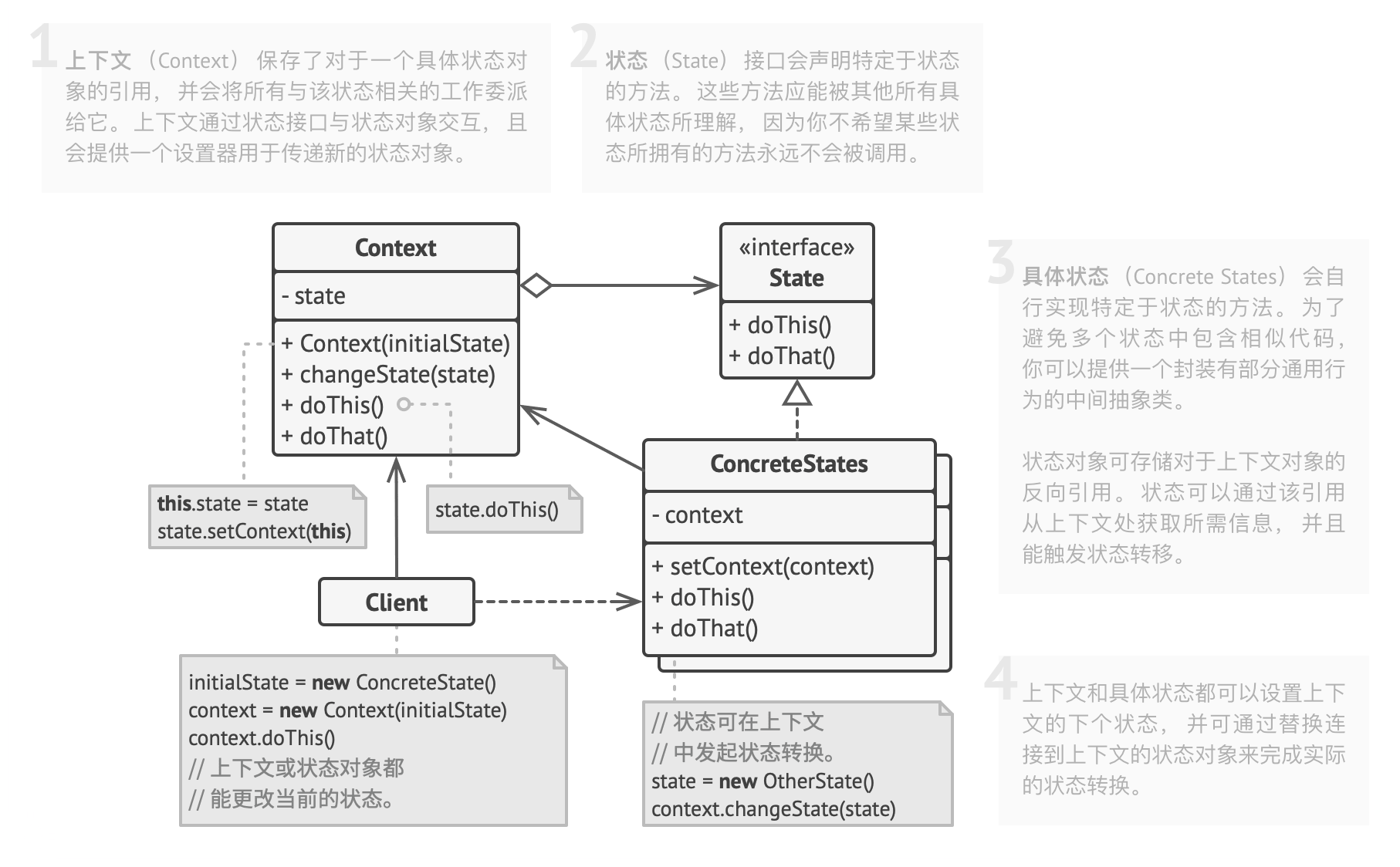1
2
3
4
5
6
7
8
9
10
11
12
13
14
15
16
17
18
19
20
21
22
23
24
25
26
27
28
29
30
31
32
33
34
35
36
37
38
39
40
41
42
43
44
45
46
47
48
49
50
51
52
53
54
55
56
57
58
59
60
61
62
63
64
65
66
67
68
69
70
71
72
73
74
|
class Context {
private state: State;
constructor(state: State) {
this.transitionTo(state);
}
public transitionTo(state: State): void {
console.log(`Context: Transition to ${(<any>state).constructor.name}.`);
this.state = state;
this.state.setContext(this);
}
public request1(): void {
this.state.handle1();
}
public request2(): void {
this.state.handle2();
}
}
abstract class State {
protected context: Context;
public setContext(context: Context) {
this.context = context;
}
public abstract handle1(): void;
public abstract handle2(): void;
}
class ConcreteStateA extends State {
public handle1(): void {
console.log('ConcreteStateA handles request1.');
console.log('ConcreteStateA wants to change the state of the context.');
this.context.transitionTo(new ConcreteStateB());
}
public handle2(): void {
console.log('ConcreteStateA handles request2.');
}
}
class ConcreteStateB extends State {
public handle1(): void {
console.log('ConcreteStateB handles request1.');
}
public handle2(): void {
console.log('ConcreteStateB handles request2.');
console.log('ConcreteStateB wants to change the state of the context.');
this.context.transitionTo(new ConcreteStateA());
}
}
const context = new Context(new ConcreteStateA());
context.request1();
context.request2();
|

